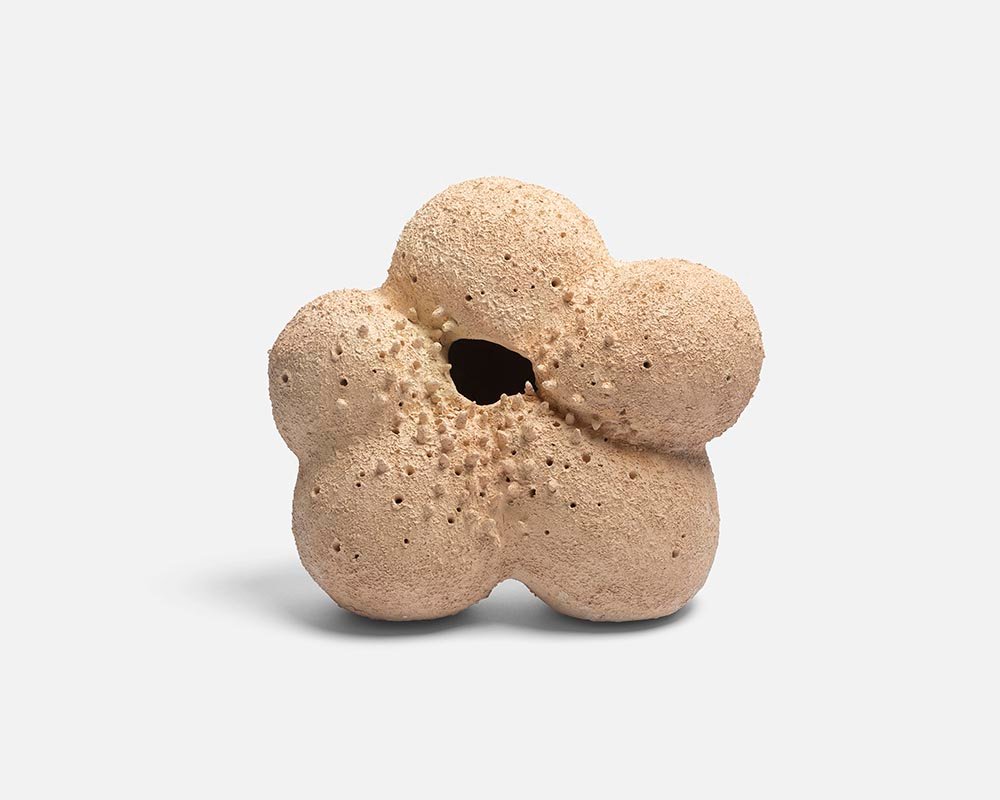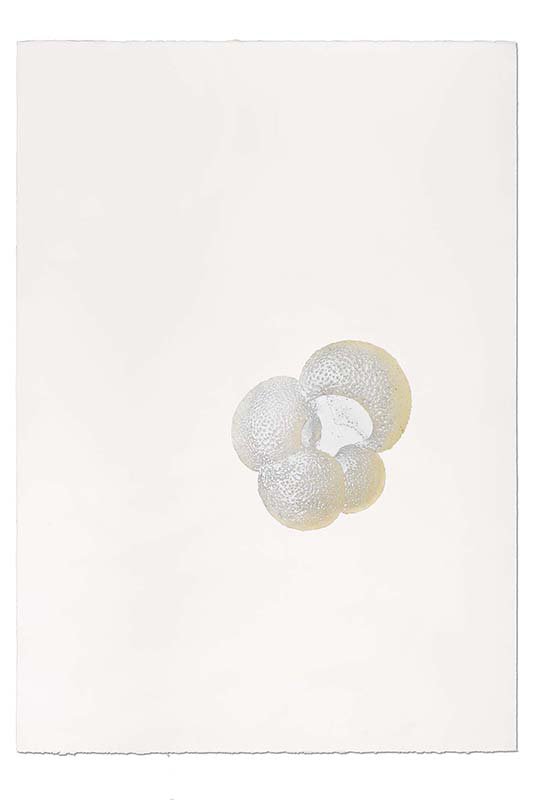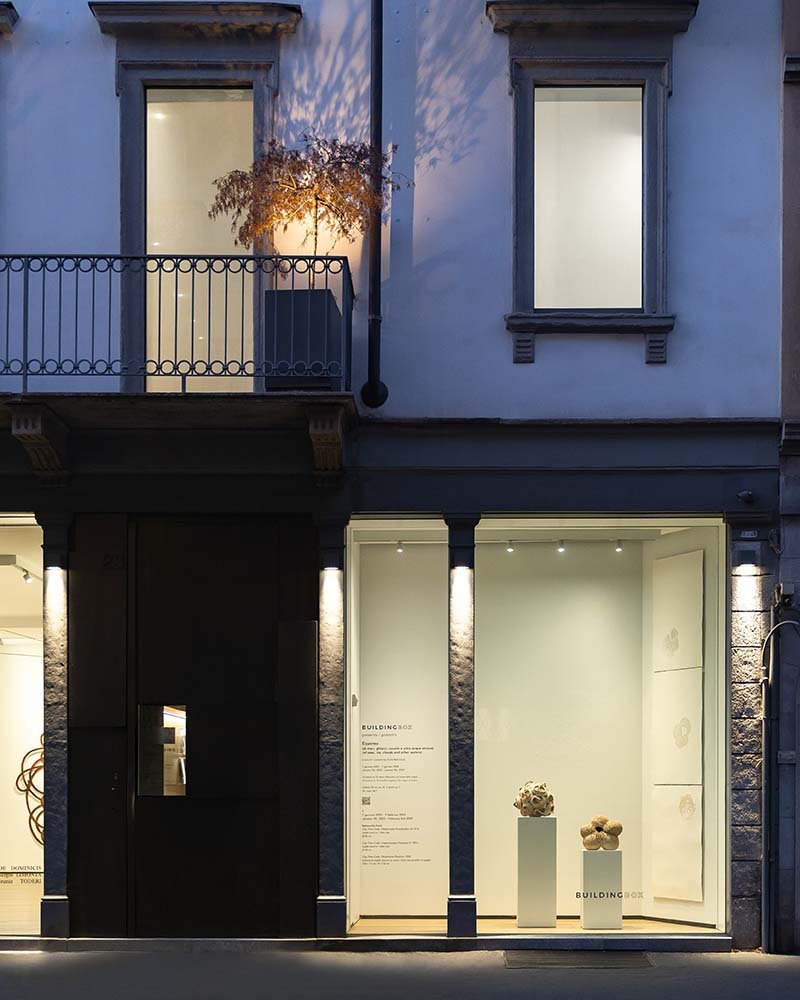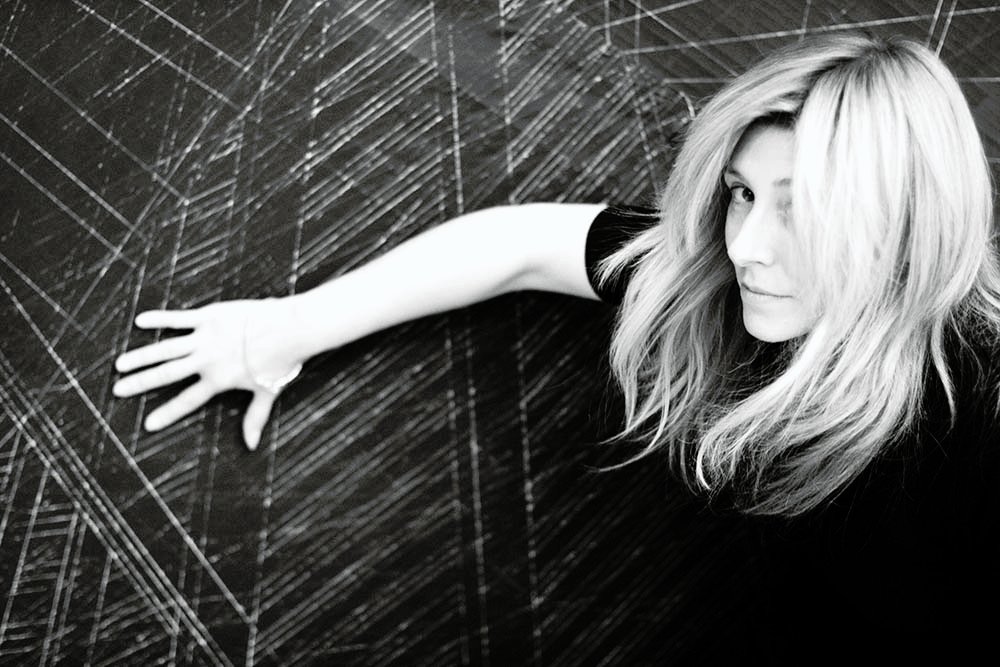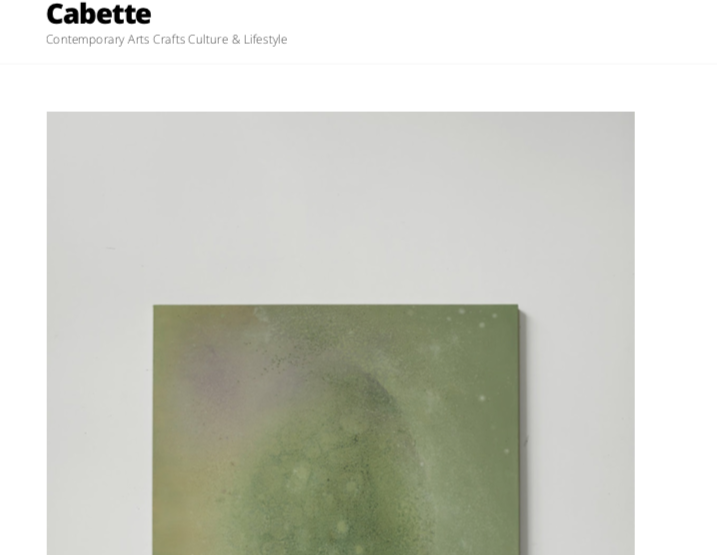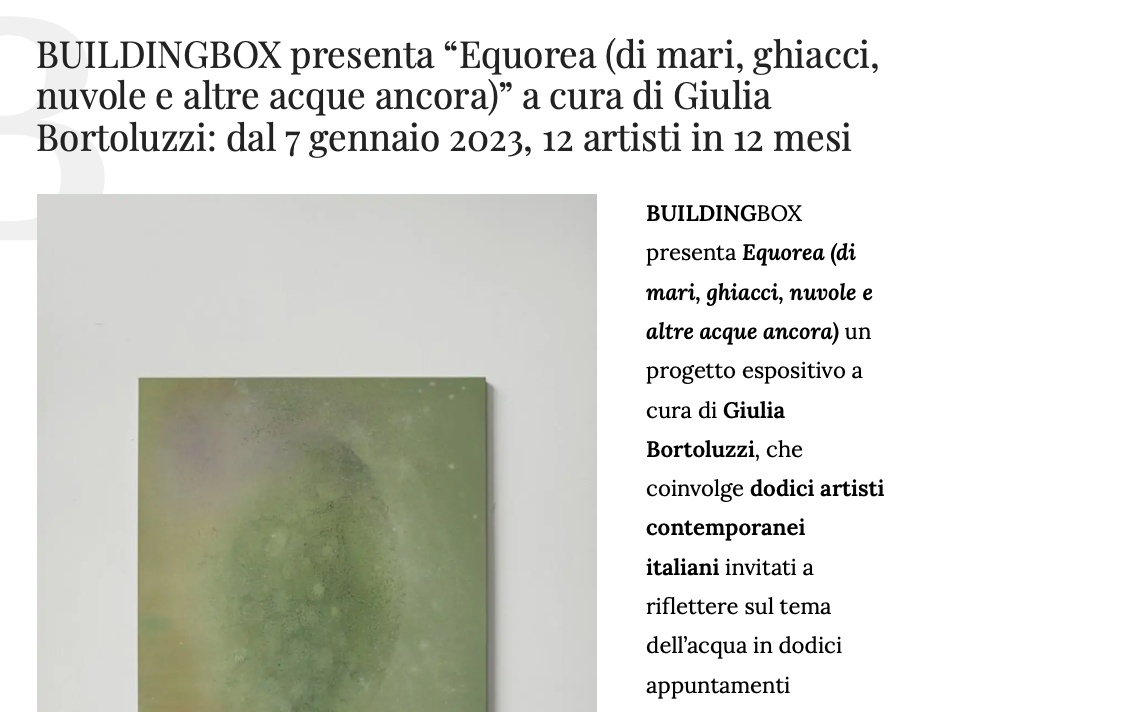Equorea – 1/12. Barbara De Ponti
07.01.2023 – 03.02.2023
From January 7th to February 3rd, 2023, BUILDINGBOX presents a selection of works from the project Clay Time Code by the artist Barbara De Ponti (Milano, 1975).
The timescale of water is so prolonged that it can be difficult for us to comprehend. We can only try to imagine it, for example with the help of images that nature has preserved for millions of years. Geological knowledge helps us extend the scale on which we consider time, detaching it from the time of human existence; the Earth, for instance, is estimated to be around 4,500 million years old. Barbara De Ponti’s project Clay Time Code (2016- to date), dedicated to the study of the geological archive, is designed to prompt reflections on how we view time, and what ancient, extinct microscopic organisms have to say about us.
Blue Clays, identified and named by Leonardo da Vinci in gullies in the Faenza area, are a complex result of the interaction between time and the environment. Datable to the beginning of the Early Pliocene, this clay terrain signals the renewed connection between the Atlantic Ocean and the Mediterranean Sea, when the extensive Po Valley basin was taken over by the sea again, becoming a large gulf with a predominantly silty bed. The area remained this way for nearly 4 million years. De Ponti has used the clay to make macroscopic models of the nanofossils that comprise it, based on images from a scanning microscope provided by the paleontologist Luca Santucci: an alga, Gephyrocapsa Oceanica, and a foraminifera, Globorotalia Puncticulata, which are so typical of the geological site where they formed that they have become markers, including iconographically.
For the project Equorea (of seas, ice, clouds and other waters) presented in BUILDINGBOX, De Ponti exhibits a series of works depicting Gephyrocapsa Oceanica and Globorotalia Puncticulata, two sculptures and a number of works on paper (unique pieces) created in 2022 using blue clay powder and produced in collaboration with Atelier A14.
The exhibition is the first appointment of Equorea (of seas, ice, clouds and other waters), a project curated by Giulia Bortoluzzi, which involves, from January 7h, 2023 to January 9th, 2024, twelve Italian contemporary artists invited to explore the topic of water in twelve monthly solo shows, scheduled in a sequence that follows the lunar calendar.
The title references Eugenio Montale’s poem Falsetto (1923), published in the collection Ossi di Seppia (1925). The poem revolves around a girl called Esterina, described as an ocean creature (“equorea creatura”), and frames the sea as a metaphor for life and the wonder of living without worrying about the future: “The power that tempers you is water, in water you find and renew yourself.” Montale’s work picks up on the way we habitually associate water with life, a notion echoed by Mircea Eliade in A History of Religious Ideas (1949), which describes it as the total of all “virtualities”, the matrix for all potential life, the foundation of the whole world. Water is at the origin of all cosmic manifestation, symbolizing the primordial substance from which all forms arise, and to which they return, by regression or cataclysm. Water lies at the beginning and end of every historical or cosmic cycle. It will always exist, and never be alone, because it is germinative, encompassing the virtualities of all forms in its own undivided unity. In cosmogony, mythology, ritual, and iconography, water performs the same function: it precedes all forms and sustains all of creation. A symbol of life, it gives universal becoming a cyclical structure.
Following the cyclical pattern of the astronomical tides (which occur when the Moon, Earth and Sun are in alignment), at each full moon in the year 2023, BUILDINGBOX will play host to the work of twelve Italian contemporary artists, who have been asked to explore the theme of water: Ludovico Bomben (Pordenone, 1982), Jaya Cozzani (Mumbai/Kanchipuram, 1982), Barbara De Ponti (Milano, 1975), Gaspare (Terlizzi, 1983), Michele Guido (Aradeo, 1976), Silvia Mariotti (Fano, 1980), Fabio Marullo (Catania, 1973), Elena Mazzi (Reggio Emilia, 1984), Ignazio Mortellaro (Palermo, 1978), Fabio Roncato (Rimini, 1982), Michele Spanghero (Gorizia, 1979), Virginia Zanetti (Fiesole, 1981).
The works presented in Equorea (of seas, ice, clouds and other waters) are site-specific (some are being exhibited for the first time, others are reworkings of previous pieces) and conceive of water as an emblem of all natural elements, and more generally as a form of life and creative potential. As a topic, water not only intrigues and inspires, but also elicits specific reflections on the future of our planet. Indeed, the life of all organisms on Earth depends on the presence of water and is shaped by its mutations: when it deteriorates, life becomes unsustainable.
There is as yet no proven scientific explanation of the origin of water on our planet. Whether generated by comets or meteorites crashing to earth, or volcanic eruptions in distant millennia, in the collective imagination it is associated with the mythological moment of creation, which contains the potential existence of all forms of life.





